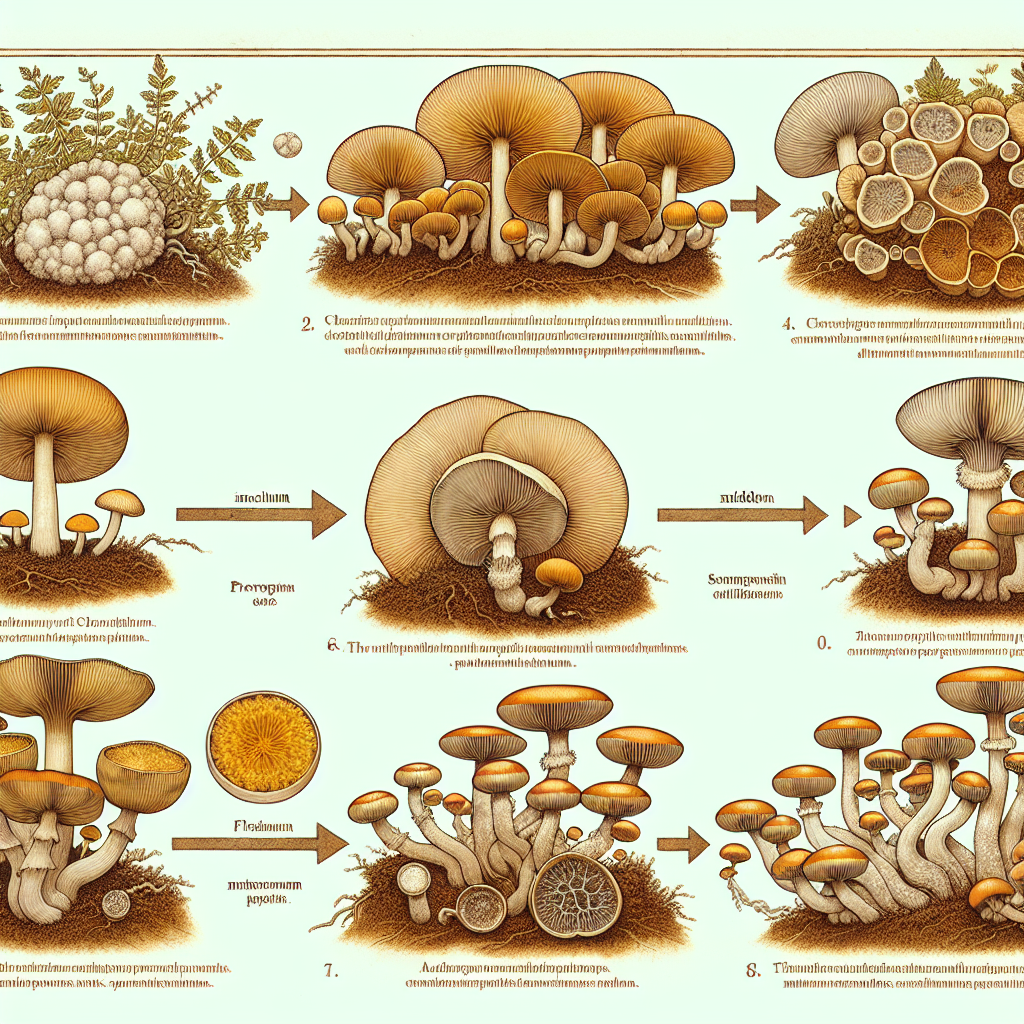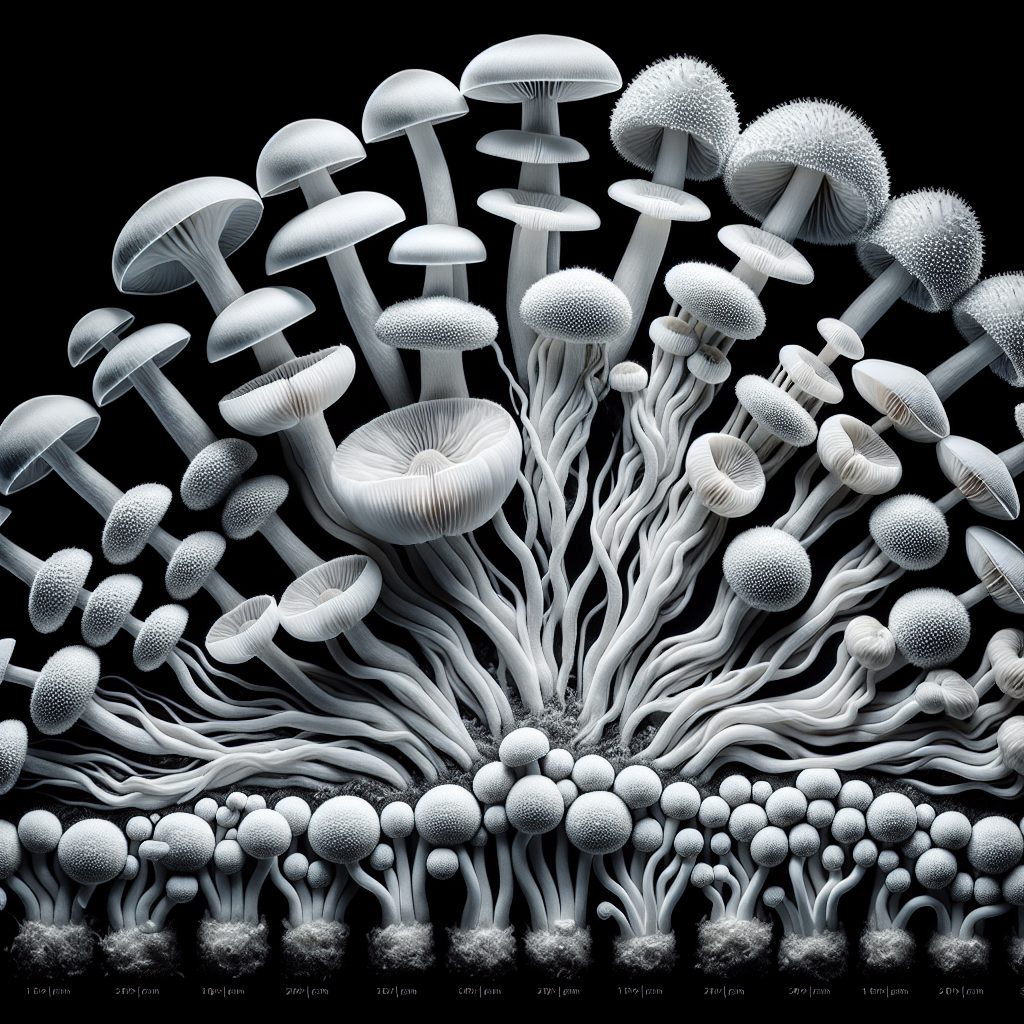Embarking on a journey through the unique lifecycle of the Cubensis Mycelium, this article unpacks the fascinating progression that takes place from spore to full-grown fungus. You will discover the intricate mechanisms behind the growth of this unique organism, articulating each stage one after the other. From germination to colonization, followed by the primordium’s formation and culminating with the fruiting of mature mushrooms, your understanding of this intriguing process is about to deepen. Set your expectations high as the enigmatic world of Cubensis Mycelium mushroom cultivation unfolds.
Understanding Cubensis Mycelium
The world of fungi and their growth process is fascinating and intricate. One integral part of this system within the realm of mushroom cultivation is the Cubensis mycelium, which is the vegetative part of the fungi.
Definition of Cubensis Mycelium
Cubensis Mycelium is a white filamentous network consisting of strands known as hyphae. This web-like structure expands through the organic matter in which it is growing, extracting nutrients and water to foster its own growth and development.
Significance of Cubensis Mycelium in Mushroom Cultivation
In mushroom cultivation, the Cubensis mycelium plays a significant role. It’s essentially the foundation from which mushrooms or ‘fruiting bodies’ spawn. The mycelium serves as the mushroom’s root system, responsible for nutrient absorption and laying the groundwork for the organism’s subsequent fruiting process.
Biology and Structure of Cubensis Mycelium
Understanding the biology and structure of Cubensis mycelium are key aspects of mushroom cultivation.
Composition of Cubensis Mycelium
Cubensis mycelium is composed of minute, interwoven hyphae. These thread-like structures consist of tubular cells characterized by complex walls mainly composed of chitin.
Differences between Mycelium and Mushroom Fruiting Bodies
The primary distinction between mycelium and mushroom fruiting bodies revolves around their roles. While the mycelium is responsible for nutrient absorption and network building, the fruiting bodies’ primary objective is reproduction, releasing spores to propagate more mycelia.
Cubensis Mycelium Growth Conditions
Successfully growing Cubensis mycelium requires specific conditions in terms of temperature, light, humidity, and air exchange.
Required Temperature and Humidity
Cubensis mycelium thrives in temperatures ranging from 75-81°F (24-27°C) and requires high humidity levels of around 95% until colonization is complete.
Light and Darkness Requirements
While mycelium can grow in both light and darkness, a few hours of light each day often stimulates quicker colonization by triggering the mycelium’s natural phototropic response.
Importance of Air Exchange
Air exchange is essential as it helps prevent carbon dioxide buildup, which can stunt the growth of the mycelium and encourage undesirable organisms.

Preparation for Cubensis Mycelium Growth
Proper preparation can significantly shape the growth and cultivation process of Cubensis mycelium.
Suitable Growth Mediums
The growth medium or substrate should be a rich source of organic material such as grains, straw, or composted manure. This provides the nutrients necessary for the mycelium to take root and flourish.
Sterilization Process
Before introducing the mycelium to the growth medium, sterilization is necessary to eliminate any potential competing organisms. This can be achieved by pressure cooking or steam sterilization.
Inoculation Techniques
Inoculation involves introducing the mycelium or its spores into the sterile substrate. This process must take place in a sterile environment to prevent contamination.
Stage 1: Germination
The first stage in Cubensis mycelium cultivation is germination, which involves nurturing the spores until they sprout hyphae.
The Importance of Spores in Germination
Spores are reproductive units that germinate to form new mycelial colonies when provided with suitable conditions of temperature, humidity, nutrients, and correct pH.
Condition Requirements for Successful Germination
Germination requires a moist and nutrient-rich environment, along with suitable temperatures of about 70-75°F (21-24°C).
Time Frame for Germination
Germination usually takes between three to five days, though it can vary depending on the growth conditions and the vigor of the spores.
Stage 2: Mycelium Colonization
Mycelium colonization is the stage where mycelial threads establish a robust network within the substrate.
Initial Formation of Mycelial Threads
Exactly establish a healthy network the initial formation of mycelial threads or hyphae occurs soon after germination. The newly sprouted hyphae branch out, seeking nutrients and water throughout the substrate.
Building Mycelium Network
As the hyphae grow, they intertwine and create an intricate network throughout the substrate. This dense web of mycelium is a crucial foundation for the fruiting bodies that emerge later.
Factors Affecting Colonization Speed
The colonization speed depends on several factors including the substrate’s moisture and nutrient content, temperature, and humidity level.
Stage 3: Strengthening and Maturation
During the strengthening and maturation stage, the mycelium network becomes denser, preparing the underlying foundation for fruiting.
Visible Signs of Mature Mycelium
Mature mycelium appears as a dense, uniform white mat covering the substrate surface completely.
The Role of Triggers in Maturation
Even when all the growth factors are suitable, certain triggers such as a drop in temperature, exposure to light, or increase in fresh air can stimulate maturation.
Considerations During This Stage
During this stage, it is vital to maintain the conditions conducive to mycelium growth. Any massive alteration or disruption can place unwanted stress on the mycelium.
Stage 4: Primordia Formation
The formation of primordia, or ‘pins’, is the next step towards producing the final mushroom fruit bodies.
Biological Process Behind Pinning
Pinning is a biological process where the mycelium starts to aggregate into small clusters, which will eventually develop into fruit bodies.
Colony Conditions that Encourage Primordia Formation
Temperature drops, exposure to light, and increased fresh air significantly influence primordia development. These conditions signify to the mycelium that it’s time for the fruiting stage to commence.
Stage 5: Fruiting and Harvesting
The final stage in Cubensis mycelium cultivation is the fruitful production of mushrooms and their subsequent harvesting.
Recognizing Ready-to-Harvest Fruits
Recognizing mushrooms ready for harvest typically involves noting the state of the mushroom’s veil. In most species, including Cubensis, the veil breaks, revealing the mushroom’s gills when it’s ripe for picking.
Safe Harvesting Techniques
Harvesting should be done cautiously by gently twisting and pulling the mushroom from its base to avoid damaging the mycelium.
Potential Harvest Yield
The harvest yield can vary and depends on several factors such as the strain of the mycelium, the quality of the stake condition, and proper maintenance throughout the growth cycle.
Common Issues in Cubensis Mycelium Growth and Troubleshooting
To maximize growth potential, it’s often necessary to troubleshoot common issues that can arise in Cubensis mycelium cultivation.
Common Contaminants and Diseases
Some common contaminants include molds and bacteria, which not only compete for resources but could also release toxins detrimental to humans when consumed.
Recognizing and Addressing Overheating
Overheating can create a conducive environment for diseases and pests while inhibiting the growth of mycelium. It can be avoided by regularly checking and maintaining temperature levels within the recommended range.
Techniques for Reviving Stalled Growth
Addressing stalled growth requires identifying the underlying problem, which could be nutrient deficiency, improper pH, or insufficient air exchange. Once identified, this issue can be countered appropriately.
In conclusion, understanding Cubensis mycelium and its cultivation stages is essential if you’re intrigued by mycology or looking towards mushroom cultivation. By providing the correct conditions and responding aptly to potential problems, the rewarding experience of growing mushrooms from scratch can be achieved.
